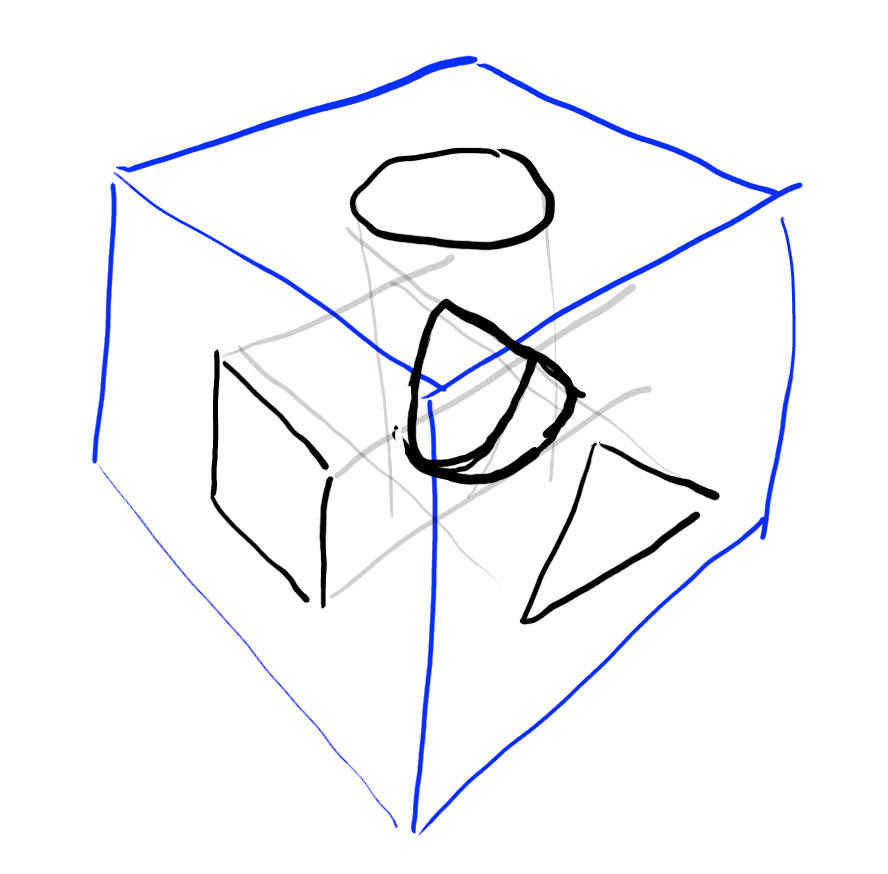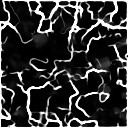Cave rendering
We need an environment for the player to fly through. One way would be to build the world out of tiles. Or to procedurally generate a mesh. But the route I'm going to use is to generate the cave entirely inside a pixel shader.
How do we render a cave?
Consider the line:
distance_from_sphere = sphere_radius - (sample_point - sphere_center).length()
It computes the distance from the surface of a sphere given the sphere parameters and a point in space to measure from.
So if we want to draw this sphere, then for every pixel we:
- Start at a specific position
- sample the sphere function
- if the sphere function is positive we haven't hit the sphere yet, so we can move forward a bit and go back to step 2.
- if the sphere function is negative, we have hit the sphere so we can compute the surface properties (normal, color etc.)
This is a technique called raymarching, and it is how all the 3d shadertoy demos are done.
So the question then arises: how do we write a mathematical function for a cave? My first thought was moire' patterns between infinite grids of primitive shapes, and this worked fairly well but the caves are very regular:
After browsing shadertoy a bit more and looking at other caves I considered gyroids, 3d noise and a few other techniques, and then I found one called Cave Pillars by xor. It ran pretty cast and the shader code was small.
So I went and wrote my own version from scratch:
How does it work? It samples a 2D texture mapping it to the surfaces of a 3D cube, and then intersects them:
Here's a sketch I did showing how three 2d images (a circle, square and
triangle) can be projected to form a solid:

It's hard to prediict what the intersection of a texture looks like. What would it look like if you used a texture like this on the one surface?

One cool thing we can do is we can use different textures on the different surfaces, allowing anisotropy. We can also scale the textures on the surfaces by a different factor. If these scaling factors are prime, then the resulting cave will be fairly aperiodic.
Implementing it
So lets implement it in our game. We already have a background plane/shader, so we can work with that. The first thing we need to do is pass in the camera transform and projection matrix so we are rendering from the same viewpoint. This all lines up, but it is always in the background. We need to have it intersect with the rendered geometry.
To do this we have to write to the fragment depth in the same way that the geometry is. There are no-doubt more efficient ways to do this, but what I found worked was to project the intersection point back into screen space:
vec3 intersection_point = data.xyz;
vec4 screen_pos = world_to_screen * vec4( intersection_point, 1.0 );
gl_FragDepth = screen_pos.z / screen_pos.w;
Where data.xyz comes from the raymarching.
To make sure it all lines up, I also had to divide the geometry's position
by the w component inside the fragment shader.
void main() {
albedo = color * texture(image_albedo, uv0);
normal_depth = vec4(world_nor.xyz, dist_from_camera);
gl_FragDepth = screen_pos.z / screen_pos.w;
}
I will happily state that I have no clue what I'm doing here, but it seems to work - with the caveat that it took me ~2 years to finally get this working!
But anyway, yay! Signed distance fields integrated with a deferred renderer!